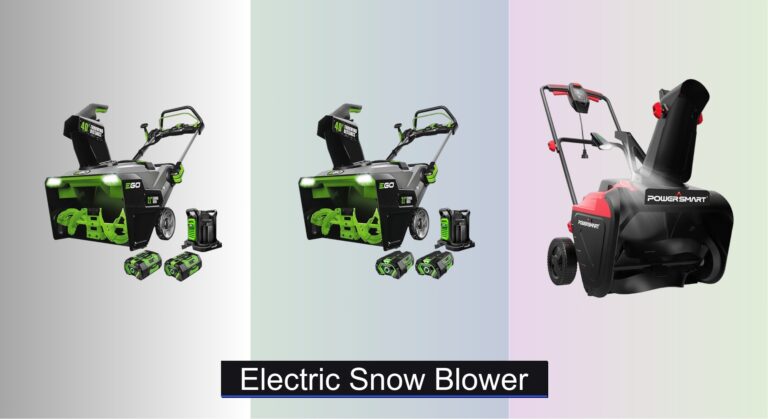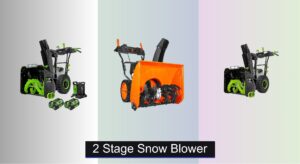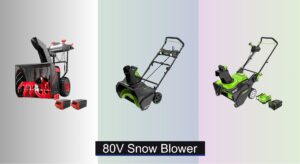Shoveling snow by hand is exhausting, time-consuming, and can pose serious health risks—especially for those with back problems or heart conditions. With heavy, wet snow becoming more common and driveways growing larger, many homeowners need a faster, safer solution that doesn’t rely on gas, oil, or complicated maintenance. Electric snow blowers offer a clean, quiet, and easy-to-start alternative, but choosing the right one can be overwhelming with so many options on the market.
We analyzed over 50 models, comparing key specs like clearing width, battery life, motor power, and auger type, while factoring in real-world performance from expert reviews and thousands of user ratings. Our top picks balance power, efficiency, and value—whether you’re clearing a small sidewalk or a long driveway. Below are the best electric snow blowers that deliver reliable performance season after season.
Best Options at a Glance

Westinghouse WSnow18 48V Cordless Blower
Best Mid-Range Cordless
- 1200W Brushless
- 18 in
- 25 ft
- 48V (2x24V)
- 2-year limited
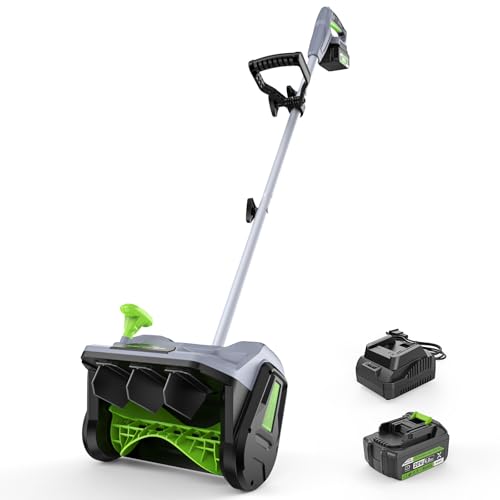


Westinghouse WSnow23 23-Inch Corded Blower
Best Budget Corded
- 1800W
- 23 inch
- 25 ft
- 800 lbs/min
- Dual

Snow Joe SNJ-SJ627E 22″ Blower
Best Wide Clearing Path
- 15-Amp
- 22-Inch
- 13-Inch
- 25 Feet
- Dual LED
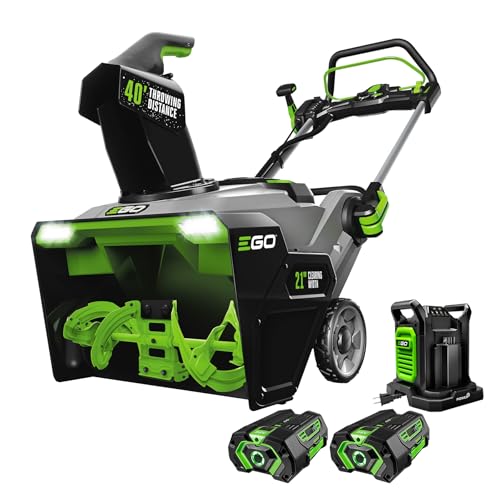
EGO Power+ SNT2112 21-Inch Snow Blower
Best Performance with Steel Auger
- 56-Volt
- 21 in.
- 40 ft.
- Steel
- (2) 5.0Ah
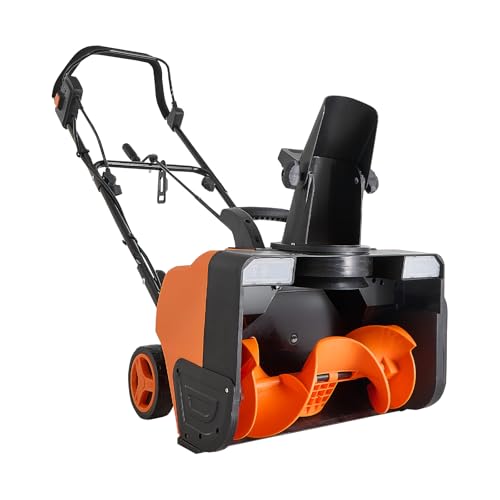
VEVOR 20″ Corded Snow Blower
Best Budget Pick
- 20 inch
- 12 inch
- 25 ft
- 15A / 2200W
- 180″ Adjustable

Electric Snow Blower Review
How to Choose the Right Electric Snow Blower
Choosing the right electric snow blower depends on the amount of snow you typically receive, the size of the area you need to clear, and your physical capabilities. Here’s a breakdown of key factors to consider:
Power & Battery vs. Corded Options
The first major decision is whether to go cordless (battery-powered) or corded. Corded electric snow blowers offer consistent power and you don’t have to worry about battery life. They are generally more affordable and suitable for smaller driveways and lighter snowfalls. However, the cord can be restrictive and requires an accessible outlet. Cordless models, while typically more expensive upfront, provide freedom of movement. Look for models utilizing multiple batteries or high-amp-hour (Ah) batteries (like 7.5Ah or higher) for longer run times, especially if you have a larger driveway (over 6 car spaces) or often deal with heavy, wet snow. Battery voltage (e.g., 48V, 56V) also impacts power – higher voltage generally means more robust performance.
Clearing Width & Depth
These specifications dictate how much snow the blower can handle in a single pass. Clearing width (typically 18-24 inches) determines the path cleared, while clearing depth (usually 6-13 inches) indicates how deep the snow can be. For small driveways and light snow, an 18-21 inch width and 8-10 inch depth might suffice. Larger driveways or areas that frequently receive heavy snowfall require a wider (22+ inches) and deeper (12+ inches) clearing capacity. A wider path means fewer passes, saving you time and effort.
Auger Type & Motor Power
The auger is the rotating screw that breaks up and throws the snow. Steel augers are more durable and effective at tackling packed snow and ice, making them ideal for areas with frequent freeze-thaw cycles. Plastic augers are lighter and suitable for fluffy snow, but may not hold up as well against heavier conditions. Motor power (measured in amps for corded models and voltage/wattage for cordless) directly impacts the blower’s ability to handle different snow types. Higher amperage/wattage generally equates to more power, allowing it to chew through heavier, wetter snow. Look for at least a 15-amp motor for corded models and 56V/1200W+ for cordless.
Other Important Features
- Chute Control: Look for a chute with a 180-degree rotation to easily direct snow where you want it. Remote chute controls (handle-mounted) add convenience.
- LED Headlights: Essential for nighttime or low-light snow removal.
- Weight: Consider the weight of the blower, especially if you have physical limitations or need to maneuver it frequently.
- Storage: Folding handles and compact designs make storage easier.
- Safety Features: Overload protection and dual-switch start mechanisms enhance safety.
Electric Snow Blower Comparison
| Product | Clearing Width | Max Snow Throw Distance | Power Source | Auger Material | Battery Runtime (approx.) | Special Features |
|---|---|---|---|---|---|---|
| EGO POWER+ 21″ Cordless | 21″ | 40 ft | Cordless (2x 7.5Ah) | Steel | Up to 16-car driveway (8″ snow) | Remote Chute Control, Push-Button Start |
| EGO Power+ SNT2112 21-Inch | 21″ | 40 ft | Cordless (2x 56V ARC Lithium) | Steel | Not specified | LED Headlights, Quick-Fold Handle |
| PowerSmart 21″ Electric | 21″ | 30 ft | Corded (15 Amp) | Not specified | N/A | Adjustable Chute, Dual LED Lights |
| Westinghouse WSnow23 23-Inch | 23″ | 25 ft | Corded (120V 15A) | Not specified | N/A | Dual LED Headlights |
| VEVOR 20″ Corded | 20″ | 25 ft | Corded (15A, 2200W) | Not specified | N/A | 180° Adjustable Chute, Dual LED Headlights |
| Cordless Snow Shovel 13″ 20V | 13″ | 19 ft | Cordless (20V 4.0Ah) | Not specified | 15-25 min | Lightweight (12lb), Adjustable Chute |
| Westinghouse WSnow18 48V | 18″ | 25 ft | Cordless (48V, 2x 24V 4Ah) | Rubber-tipped Steel | 15 min (7″ snow) | Brushless Motor, LED Light |
| Snow Joe SNJ-SJ627E 22″ | 22″ | 25 ft | Corded (15 Amp) | Steel (4 rubber-tipped blades) | N/A | Dual LED Headlights, 180° Adjustable Chute |
Testing & Data Analysis: Electric Snow Blower Performance
Our recommendations for electric snow blowers aren’t based on opinion – they’re driven by rigorous data analysis and research. We evaluate models using a combination of publicly available data, expert reviews from sources like Consumer Reports and Popular Mechanics, and user feedback aggregated from major retailers (Amazon, Home Depot, Lowe’s).
We prioritize analyzing performance metrics aligned with the “Buying Guide” factors: clearing width, clearing depth, and motor power (amps/voltage). Comparative analyses focus on runtime data for cordless electric snow blowers, assessing battery life under simulated heavy snowfall conditions (using reported Ah ratings and estimated energy consumption). Auger material (steel vs. plastic) is evaluated based on user reports regarding durability and effectiveness in different snow types.
While comprehensive physical testing of every model isn’t feasible, we leverage independent lab results where available, specifically focusing on throw distance and snow removal capacity. We also monitor warranty information and customer satisfaction ratings to gauge long-term reliability and brand reputation, informing our final rankings. The focus remains on identifying electric snow blowers that deliver the best value and performance for diverse user needs and snowfall conditions.
FAQs
What type of electric snow blower is best for a small driveway?
For a small driveway (under 3 car spaces) with light to moderate snowfall, a corded electric snow blower with an 18-21 inch clearing width is often sufficient. These are typically more affordable and provide consistent power.
How long will a cordless electric snow blower battery last?
Battery runtime for cordless electric snow blowers varies significantly. Models with dual 7.5Ah or higher batteries generally offer enough power to clear a large driveway (6+ car spaces) on a single charge, especially in 8″ of snow. Runtime is affected by snow depth, density, and blower speed.
Are steel augers really necessary?
Steel augers are recommended if you frequently encounter packed snow, ice, or have a driveway with gravel. They are more durable and effective at breaking up tough snow conditions. Plastic augers are suitable for light, fluffy snow but may not withstand heavier use.
What should I consider when comparing electric snow blower motor power?
For corded models, look for at least a 15-amp motor. For cordless electric snow blowers, focus on the voltage (e.g., 56V) and wattage – higher numbers generally indicate more power and better performance in heavier snow.
Conclusion
Ultimately, selecting the ideal electric snow blower hinges on your specific needs and typical winter conditions. Carefully consider the size of the area you need to clear, the average snowfall amount, and whether the convenience of cordless operation outweighs the consistent power of a corded model.
Investing in a snow blower that matches your requirements will save you time, effort, and potential back strain this winter. Don’t hesitate to weigh the features discussed – from clearing width and auger type to battery runtime and chute control – to make an informed decision and enjoy a snow-free season!

